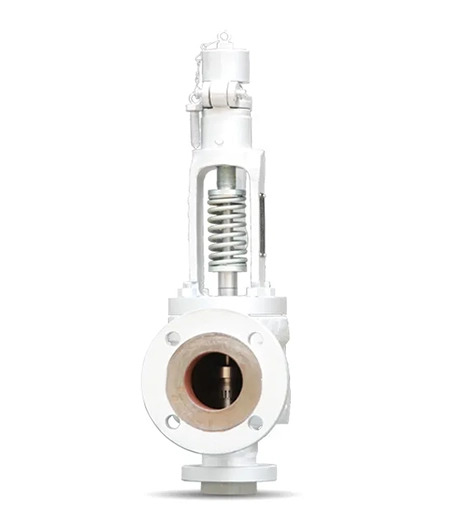Industrial boilers are powerful machines that generate steam for a wide range of applications—from power generation and chemical processing to oil refineries, paper mills, and food industries. Boilers are the heart of many plants, but they also carry serious risks if not operated safely. Because boilers run at high pressure and temperature, even a small malfunction can lead to dangerous accidents, costly damage, or loss of life.
One of the most important components that protects boilers and ensures safe operation is the Boiler Safety Valve. Often referred to as the last line of defense, these valves prevent pressure from rising beyond safe limits, avoiding catastrophic failures.
In this article, we will take a detailed look at what Boiler Safety Valves are, how they work, their types, and why they are essential for industrial safety.
What Are Boiler Safety Valves?
A Boiler Safety Valve is a mechanical device fitted on boilers and pressure vessels to automatically release excess steam when pressure builds up beyond the set safe level. Its role is simple yet crucial—if the boiler pressure rises above the maximum allowable pressure, the valve opens instantly, discharges steam, and brings the pressure back to normal.
Think of it as a pressure guard or a safety shield for the boiler. Without it, the boiler could explode due to uncontrolled steam pressure.
Boiler Safety Valves vs. Boiler Safety Relief Valves
Although the terms Boiler Safety Valves, Boiler Safety Relief Valves, and Safety Relief Valves are often used interchangeably, there are slight technical differences:
- Boiler Safety Valves
- Specifically designed for steam and gas systems.
- They open fully (pop action) the moment the set pressure is reached.
- Used in boilers to provide quick pressure relief.
- Boiler Safety Relief Valves
- Can be used for both steam and liquid applications.
- They open gradually in proportion to the increase in pressure.
- Provide smoother operation in systems that cannot handle sudden discharges.
In steam boilers, Boiler Safety Valves are the preferred choice because of their ability to act instantly and prevent accidents.
Why Are Boiler Safety Valves Critical for Industrial Safety?
1. Preventing Boiler Explosions
The biggest threat in steam systems is an explosion due to excessive pressure. Boiler Safety Valves release excess steam instantly, ensuring pressure never exceeds the safe operating limit. This prevents boiler explosions, which can otherwise cause massive destruction.
2. Protecting Equipment and Infrastructure
Boilers and connected piping systems are expensive assets. Overpressure can damage tubes, joints, and machinery. By maintaining pressure balance, Safety Relief Valves extend the life of equipment and reduce repair or replacement costs.
3. Ensuring Worker Safety
Boiler accidents are not only financial risks but also life-threatening. By automatically controlling overpressure, Boiler Safety Relief Valves protect plant workers and create a safer work environment.
4. Meeting Legal and Compliance Standards
Most industrial safety regulations, including ASME (American Society of Mechanical Engineers) and Indian Boiler Regulations (IBR), mandate the use of Boiler Safety Valves. Failure to comply can lead to fines, shutdowns, or legal consequences.
5. Reducing Downtime and Production Losses
Unexpected shutdowns due to pressure failures can halt production. Safety Relief Valves keep the system stable, reduce unplanned downtime, and ensure continuous operations.
Working Principle of Boiler Safety Valves
The functioning of a Boiler Safety Valve is based on pressure difference. Here’s how it works step by step:
- Normal Operation – The valve remains tightly closed as long as the boiler pressure is below the set limit.
- Excess Pressure Build-Up – When boiler pressure exceeds the set value, the spring force inside the valve is overcome by steam pressure.
- Valve Opening (Pop Action) – The valve opens instantly and releases excess steam into the atmosphere.
- Pressure Drop – Once the pressure drops back to safe levels, the spring pushes the valve disc back into its seat, closing the valve.
This automatic process ensures continuous protection without requiring human intervention.
Types of Boiler Safety Valves
Different industries use different types of safety valves depending on pressure, temperature, and application. The main types include:
- Spring Loaded Safety Valve – Uses a spring mechanism to open and close the valve. Commonly used in most industrial boilers.
- Lever Safety Valve – Operated by a lever and weight system. Mostly seen in old boiler designs.
- Pilot Operated Safety Valve – Uses an auxiliary pilot valve for precise pressure control, suitable for large capacity systems.
- Balanced Safety Valve – Designed to handle backpressure, ensuring stable performance even in complex piping systems.
Each type of Safety Relief Valve has its own advantages, and selection depends on the boiler’s size, design, and application.
Key Features of Reliable Boiler Safety Valves
For effective safety, a high-quality Boiler Safety Valve must have:
- Accurate set pressure – Opens exactly at the designed pressure point.
- Quick response – Immediate release of steam when pressure builds up.
- Durability – Built with corrosion-resistant, high-temperature materials.
- Tight sealing – Ensures no leakage during normal operation.
- Ease of maintenance – Simple inspection and servicing procedures.
Maintenance and Testing of Boiler Safety Valves
Like any mechanical device, Boiler Safety Valves must be inspected and maintained regularly. Even a minor malfunction can put the entire plant at risk. Common maintenance practices include:
- Regular Inspections – Checking for leaks, rust, or cracks.
- Functional Testing – Simulating overpressure to check valve response.
- Calibration – Ensuring the valve opens at the correct set pressure.
- Cleaning – Removing dirt, deposits, or scale buildup that could block the valve.
- Professional Servicing – Periodic servicing by certified experts to meet compliance standards.
Neglecting maintenance can lead to stuck valves, false openings, or complete failure during emergencies.
Real-Life Example: Why Safety Valves Save Lives
In the past, there have been incidents where neglected or malfunctioning Boiler Safety Valves caused devastating boiler explosions in factories and power plants. These accidents not only caused equipment destruction but also resulted in worker fatalities.
On the other hand, plants that regularly inspect and maintain their Safety Relief Valves have avoided disasters, proving that these small devices play a massive role in saving lives and ensuring industrial reliability.
Conclusion
In any industry that uses boilers, safety is non-negotiable. Boiler Safety Valves are not just optional accessories—they are mandatory safety devices that prevent explosions, protect equipment, ensure worker safety, and keep operations running smoothly. Whether you call them Boiler Safety Valves, Boiler Safety Relief Valves, or simply Safety Relief Valves, their purpose remains the same: to safeguard lives and machinery from the dangers of overpressure.
By investing in high-quality valves, ensuring proper installation, and conducting regular maintenance, industries can create a safe working environment while improving efficiency and compliance.
In short, a Boiler Safety Valve may look small compared to the size of a boiler, but its role in industrial safety is enormous—and irreplaceable.






